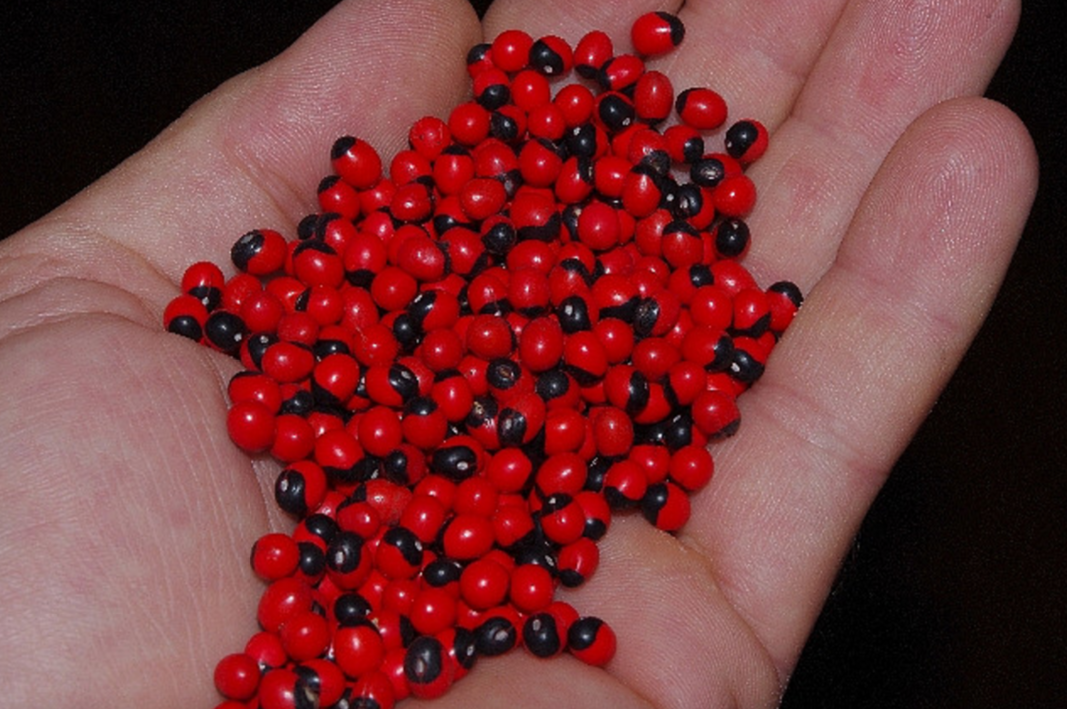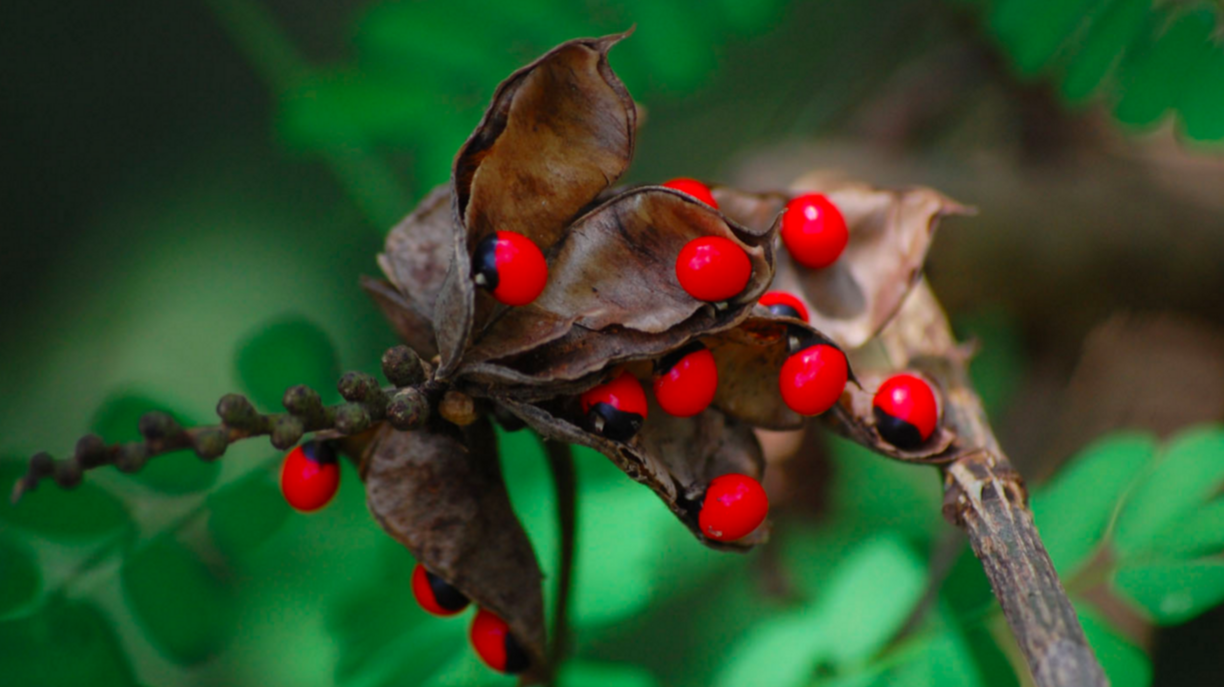Stephany Bonney remembers the day her son Duncan’s daycare called her saying the 18-month-old was nauseous and had a fever.
She also remembers the panic that set in the following morning, after finding “plastic-looking pellets” in Duncan’s diaper.
Posted by Stephany Krauz Bonney on Monday, July 1, 2013
So he did what any parent would do— he Googled Duncan’s symptoms. Craig’s adrenaline was at an all-time high.
The worried parents snapped a photo of it and sent it to their family doctor, who immediately contacted Poison Control.
The beans looked similar to the ones in this photo:
According to the U.S. National Library of Medicine, abrus precatorius, also known as “rosary peas” for their common use in making Catholic rosaries, contain one of the most potent toxins known to man— abrin.
Most people who ingest the beans without cracking the outer layer may have mild symptoms, like nausea and vomiting, but will likely make a complete recovery.
However, if the beans are crushed and swallowed, the results can be deadly.
While it is still unclear what Duncan ate, based on the severity of his illness, doctors estimate he had chewed about one to two handfuls of beans before swallowing them.
some Dunc love
Posted by Stephany Krauz Bonney on Friday, December 27, 2013
Since his release, the Bonneys have been dedicated to warning other parents about the potentially deadly beans, which are sometimes used to make jewelry.
The pediatric emergency physician who treated Duncan, Dr. Mazin Alhamdani, considers abrus precatorius a “serious threat” for two reasons:
- It grows in some areas in the U.S. like Florida, and other tropical areas.
- It looks very appealing to kids — it’s bright red, it has a rough tip, and it looks like candy.
The CDC reports that there is currently no widely available test to see if someone’s been exposed to abrin, so people should remain vigilant if they see any symptoms of abrin exposure.
Doctors say initial signs might become present eight hours after exposure, but they could take up to three days.
If one inhales abrin powder, they might experience:
- Difficulty breathing
- Fever
- Cough
- Nausea
- Tightness in the chest
- Heavy sweating
Where it allllll began!!! Bubby's Brooklyn may be closed- but we managed to snap a picture in front of it with the kids…
Posted by Stephany Krauz Bonney on Thursday, July 31, 2014
- Vomiting
- Diarrhea
- Severe dehydration
- Low blood pressure
- Blood in urine
- Seizures
- Hallucinations
Thanks to the Bonney’s paying attention to Duncan’s symptoms and following up with doctors, their son is alive today. Now they are hoping their story will bring awareness to the dangers of these seemingly harmless beans.







